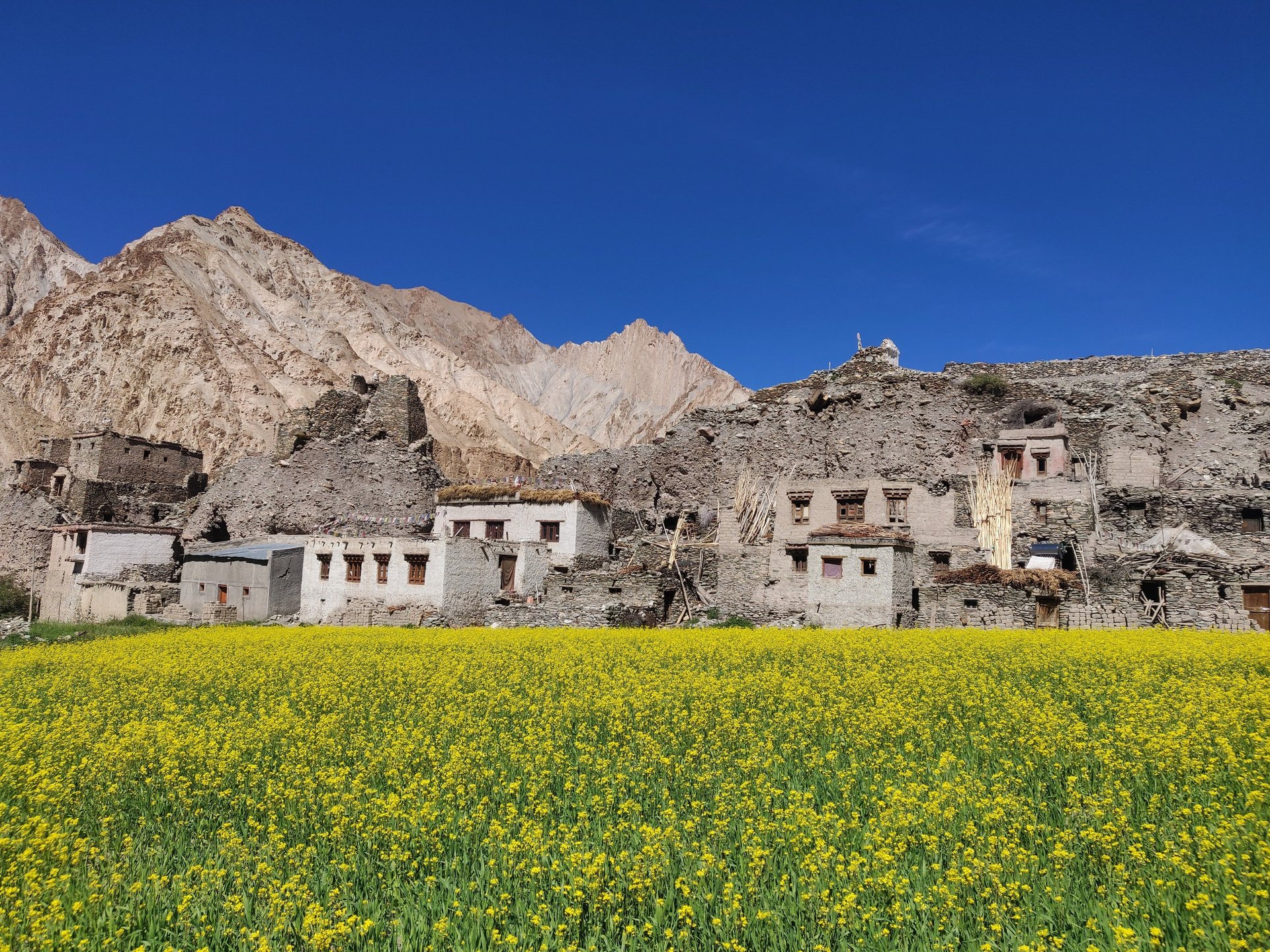
Ladakh Homestays: A True Model of Sustainable Tourism in the Himalayas
As travellers around the world shift towards eco-friendly and authentic experiences, homestays in Ladakh have emerged as a shining example of how tourism can uplift communities, protect fragile ecosystems, and preserve ancient culture—all at the same time. Far from the commercialised world of large hotels, Ladakh homestays represent a sustainable travel model that is deeply rooted in tradition, minimalism, and harmony with nature. Ladakh is a high-altitude desert where resources are scarce, weather is extreme, and communities rely heavily on the land for survival. In this environment, sustainability is not a trend—it is a way of life. And homestays are the purest expression of that way of life.
Deleks Namgyal
11/21/20252 min read


As travellers around the world shift towards eco-friendly and authentic experiences, homestays in Ladakh have emerged as a shining example of how tourism can uplift communities, protect fragile ecosystems, and preserve ancient culture—all at the same time. Far from the commercialised world of large hotels, Ladakh homestays represent a sustainable travel model that is deeply rooted in tradition, minimalism, and harmony with nature.
Ladakh is a high-altitude desert where resources are scarce, weather is extreme, and communities rely heavily on the land for survival. In this environment, sustainability is not a trend—it is a way of life. And homestays are the purest expression of that way of life.
Unlike large hotel chains, Ladakh homestays are run by local families who have lived in the region for generations. When travellers choose a homestay, every rupee goes directly to the household, helping them:
Maintain their traditional homes
Educate their children
Support agriculture
Improve community infrastructure
This creates a tourism model that empowers people rather than displacing them.
Traditional Ladakhi homes are constructed using - Mud bricks, Stones, Timber, and Natural insulation. These materials are environmentally friendly, biodegradable, and perfectly suited to the climate. Unlike modern concrete buildings, these houses stay cool in summer and warm in winter—reducing the need for heaters or air conditioning.
Homestays help preserve this architecture, which is slowly disappearing under modern construction pressures.
Food in homestays in Ladakh is often sourced directly from kitchen gardens and family farms. Guests can enjoy: Organic vegetables, Fresh apricots and apples, Traditional barley and wheat products, Homemade butter, cheese, and preserves. This farm-to-table lifestyle reduces carbon footprint, supports traditional agriculture, and provides visitors with healthier, more authentic meals.
Ladakh’s environment is extremely fragile. Homestays naturally minimise waste through:
Solar heating and solar power
Reusing greywater for gardens
Traditional composting practices
Minimal single-use plastics
Local sourcing of most necessities
Travellers often observe how Ladakhi families recycle everything—from food scraps to firewood—setting an example for sustainable living.
One of the strongest pillars of sustainable tourism in Ladakh is cultural preservation.
Homestays safeguard:
Traditional Ladakhi cuisine
Native languages and dialects
Age-old farming methods
Festivals, rituals, and monastery traditions
Handicrafts like weaving and pottery
Visitors get to witness these customs firsthand, ensuring they remain alive for future generations.
Homestays gently slow down the pace of travel. Instead of rushing through tourist spots, guests:
Spend time in villages
Join the family for daily chores
Walk through barley fields
Explore local trails
Engage with elders and children
Attend traditional ceremonies
This style of travel is low-impact, culturally respectful, and deeply fulfilling. As some parts of Ladakh—like Pangong Tso or Nubra Valley—face overtourism, homestays help distribute travellers more evenly across the region.
The true strength of Ladakh homestays lies in their simplicity. They offer comfort without excess, hospitality without commercialisation, and experiences without harming the environment. For travellers, staying in a homestay means:
Supporting local families
Reducing carbon footprint
Eating organic, homegrown food
Experiencing Ladakh’s culture authentically
Being part of responsible tourism
For Ladakh, it means preserving heritage, protecting fragile ecosystems, and ensuring tourism remains sustainable in the long run.
If you wish to explore Ladakh responsibly and meaningfully, choose a homestay. It is the truest way to honour the land, its people, and its future. As the world moves towards mindful travel, homestays in Ladakh stand as a powerful reminder that sustainability and hospitality can go beautifully hand in hand.
Because in Ladakh, sustainability isn’t a concept—it’s a way of life.


